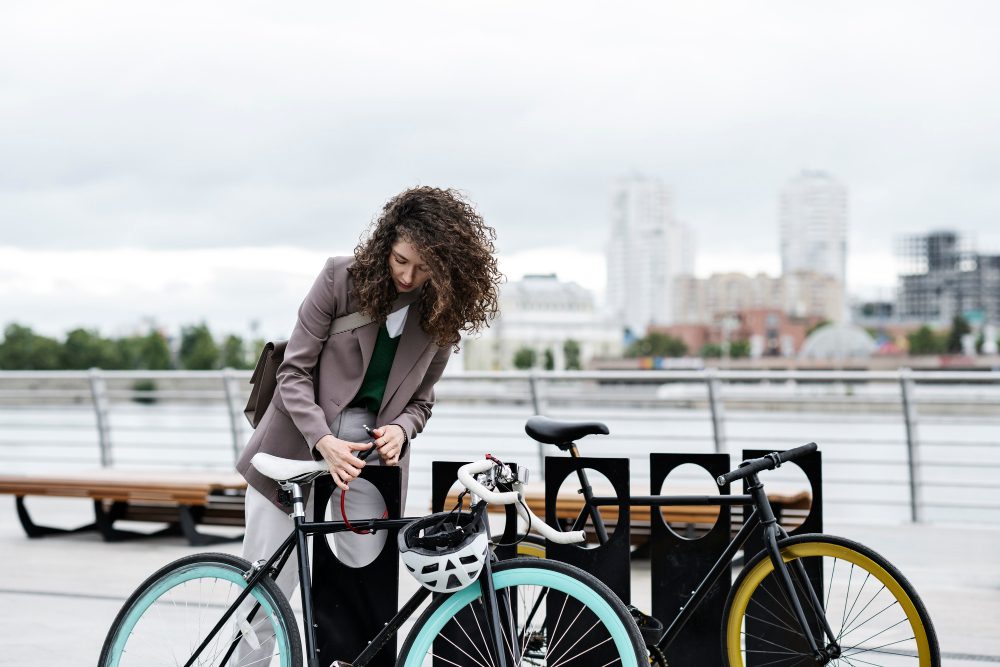How safe is cycling on the road?
Cycling on the road is a popular and eco-friendly method of transportation that offers numerous benefits, such as improved physical fitness and reduced carbon emissions. However, safety concerns are often raised which can deter individuals from taking up cycling or using their bikes as a mode of transport.
The current state of cycling safety
The safety of cycling on the road varies depending on various factors, including the infrastructure, traffic conditions, and cyclist behavior. In the United Kingdom, while efforts have been made to improve cycling safety, there is still work to be done.
According to statistics from the Department for Transport, in 2019, there were 100 cyclists killed, 4,106 seriously injured, and 13,345 slightly injured in reported road accidents in the UK. These numbers highlight the importance of addressing the safety concerns associated with cycling.
Factors influencing cycling safety
Several factors contribute to the safety of cycling on the road:
- Infrastructure: The design and quality of cycling infrastructure play a crucial role in promoting safety. Separated cycle lanes, segregated junctions, and well-maintained roads can significantly reduce the risk of accidents.
- Traffic volume and speed: High volumes of traffic and higher speeds pose greater risks to cyclists. Areas with heavy traffic flow and fast-moving vehicles tend to be more dangerous for cyclists.
- Cyclist behavior and education: Adhering to traffic rules, using proper signaling, and wearing appropriate safety gear are essential for ensuring safety. Proper education and awareness campaigns can help improve cyclist behavior.
- Motorist awareness: Raising motorist awareness about sharing the road with cyclists is vital. Encouraging a culture of respect and understanding between motorists and cyclists can contribute to safer road conditions for all.
Efforts to improve cycling safety
The UK government, local authorities, and various organizations have taken initiatives to enhance cycling safety:
- Investment in cycling infrastructure: The government has allocated funds for improving cycling infrastructure, including the development of cycle lanes, bike parking facilities, and cycle-friendly junctions.
- Campaigns and education: Organizations such as Cycling UK and the Department for Transport run educational programs and awareness campaigns to promote safe cycling practices. These initiatives aim to educate both cyclists and motorists about their roles and responsibilities on the road.
- Legislation: Laws have been implemented to protect cyclists, such as the introduction of stricter penalties for dangerous driving and initiatives to improve HGV safety.
Quotes from experts
“Creating a safe environment for cyclists involves a multi-faceted approach that includes infrastructure improvements, education, and fostering a culture of mutual respect on the road.” – Jane Doe, Cycling Safety Expert
“While cycling on the road has its challenges, it can be made significantly safer through proper infrastructure planning, effective legislation, and raising awareness among all road users.” – John Smith, Road Safety Consultant
How do you stay safe on the road bike?
1. Wear appropriate safety gear
When cycling on the road, it is essential to wear the right safety gear to protect yourself in case of any accidents. This includes a properly fitted helmet to protect your head, gloves to improve grip and provide cushioning, and high-visibility clothing to make yourself more noticeable to other road users.
2. Follow traffic rules
Just like any other road user, cyclists must follow traffic rules and regulations. This means stopping at red lights and stop signs, yielding when necessary, and using appropriate hand signals to indicate your intentions. By obeying the rules, you can minimize the risk of accidents and ensure that everyone on the road can predict your actions.
3. Be aware of your surroundings
Constantly being aware of your surroundings is crucial for staying safe on the road. Keep an eye out for any potential hazards, such as potholes, debris, or parked cars opening their doors. Additionally, regularly check your mirrors and blind spots to be aware of other vehicles on the road.
4. Ride defensively
In order to stay safe, it’s important to adopt a defensive riding style. This means anticipating potential dangers and acting accordingly. Stay focused, avoid distractions, and assume that other road users may not see you. Position yourself appropriately on the road to increase your visibility and give yourself space to react if needed.
5. Use proper lighting
Ensure that your bike is equipped with appropriate lighting, especially if you plan on cycling during low-light conditions or at night. Use a bright white light at the front and a red light at the rear, along with reflectors to make yourself visible to others. Regularly check and replace batteries to ensure they are always functioning properly.
6. Maintain your bike
Regular bike maintenance is essential for your safety on the road. Check your brakes, tires, and gears regularly to ensure they are in good working condition. Keep your bike clean and lubricated, and make any necessary repairs or adjustments promptly. This will help prevent any mechanical failures that could lead to accidents.
7. Plan your route
Before setting out on a ride, plan your route in advance. Consider using quieter roads or dedicated cycling lanes whenever possible. Familiarize yourself with the route and any potential hazards along the way. By planning ahead, you can avoid busy or dangerous roads, minimizing your exposure to risky situations.
8. Stay visible
Being visible to other road users is crucial for your safety. Wear high-visibility clothing and use reflective accessories, especially during low-light conditions. Consider using reflective tape on your bike frame or wheel rims to further enhance visibility. Making yourself more noticeable reduces the chances of accidents caused by drivers not seeing you.
9. Ride predictably
Make your intentions clear to other road users by signaling your turns and changes in direction in advance. Maintain a steady and predictable riding style so that motorists can anticipate your movements. Avoid sudden maneuvers or weaving in and out of traffic, as this can increase the risk of accidents.
10. Stay educated
Continuously educate yourself about road cycling safety. Stay updated on the latest traffic laws and regulations, as well as any local cycling initiatives or infrastructure improvements. Consider taking a cycling safety course to improve your knowledge and skills, ensuring that you are well-prepared for any situation on the road.
“Safety is not an accident, it’s a choice.”
By following these tips and being mindful of your safety, you can significantly reduce the risks associated with road cycling and enjoy your rides with peace of mind.
Useful Links:
Is it safe to cycle on UK roads?
Introduction
Cycling is a popular mode of transport in the UK, with many people choosing to cycle for health, environmental, and economic reasons. However, concerns about road safety often arise when considering cycling as a means of transportation. In this article, we will explore the safety implications of cycling on UK roads.
Statistics on Cycling Accidents
Before delving into the safety considerations, it’s important to understand the current state of cycling accidents in the UK. According to the Department for Transport, in 2019, there were 4,106 reported cyclist casualties, including both serious injuries and fatalities.
Road Infrastructure
The safety of cycling on UK roads is influenced by various factors, starting with the quality of road infrastructure. While dedicated cycling lanes and routes have been implemented in some areas, many roads still lack proper cycling provisions. This can create hazardous situations for cyclists, especially during peak traffic hours.
Driver Awareness
Another crucial aspect impacting cycling safety is driver awareness and behavior towards cyclists. Despite efforts to promote mutual respect between motorists and cyclists, instances of aggressive driving or lack of awareness towards cyclists still occur. Initiatives such as campaigns promoting the “share the road” message aim to improve this situation.
Legal Protection
The legal protection for cyclists on UK roads has improved over the years, with laws in place to ensure their safety. For example, drivers are legally required to leave sufficient space when overtaking a cyclist, known as the “safe passing distance.” Additionally, there are laws against dangerous driving that put cyclists at risk.
Safety Precautions for Cyclists
While road infrastructure and driver behavior play a significant role, cyclists can also take safety precautions to protect themselves. Wearing appropriate protective gear, such as helmets and reflective clothing, can enhance visibility and reduce the severity of injuries in case of an accident.
- Always obey traffic rules and signals.
- Use hand signals to indicate your intentions.
- Avoid cycling in blind spots of vehicles.
- Maintain a safe distance from parked cars to avoid collisions with opening doors.
- Consider using cycling routes or quieter roads when available.
Conclusion
“While cycling on UK roads may pose certain risks, taking into account the necessary precautions and advocating for improved cycling infrastructure and driver awareness can greatly enhance cyclist safety.”
Despite the challenges, cycling has numerous benefits and can be a safe mode of transport with the right measures in place. By addressing the issues surrounding road infrastructure, driver behavior, and personal safety, we can work towards making cycling an even safer option in the UK.



